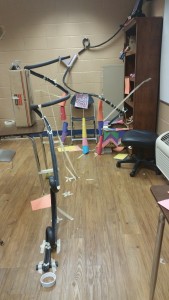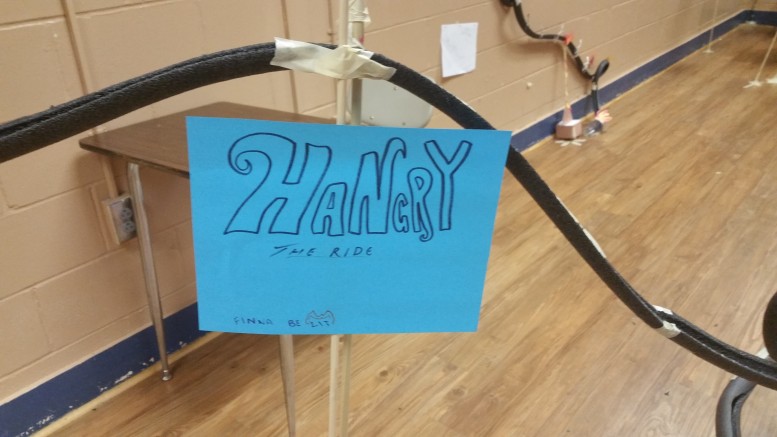By: Samuel G. Reece – Montevallo High School Student
Pre-Calculus is notoriously hard to understand. What is the “f(x)”? For that matter, what’s the “f(x(e))” and how in the world does that connect to “natural logs?” Imagine now, if you will, teaching these concepts to a pack of hungry teenagers ready to get to lunch, to graduation, to life. Hard stuff.
Good thing is, in my class (Montevallo High School’s Pre-AP Precalculus Fifth Period) at least, we had thrills and loops and real-life roller coasters to ride. A big concept in Precalculus is the idea of “functions” (I’ll try not to dive too far into the math here, but imagine parent functions as the basic rules for how a certain type of equation is graphed.) These functions are easy to see in the real-world: a curved road looks a little like a quadratic, every hill looks a little like
At the beginning of the last quarter of this school year, Mrs. Dawn Cabrera (MHS Math Teacher and guru extraordinaire) took our class into an empty classroom and instructed us to build a roller coaster with at least one turn, one loop, one line, and one other easy-to-see function. For about two weeks both the fifth and eighth-period classes worked to build several coasters out of pipe insulation, tape, a few dowels, and whatever we could bring from home.
 Working in groups we used engineering skills and pure creativity to create our coasters. My group sent a marble through several drops, a loop, and a cardboard box using just those provided supplies and a few styrofoam blocks. We named our coaster “Hangry: The Ride”
Working in groups we used engineering skills and pure creativity to create our coasters. My group sent a marble through several drops, a loop, and a cardboard box using just those provided supplies and a few styrofoam blocks. We named our coaster “Hangry: The Ride”
Because of our pre-lunch period hangry (hungry + angry) attitudes while building it. Other groups’ coasters were given even weirder names, including “The Embalco,” “The THOUGHT Express,” and “Montem of Scotch.” Don’t ask me what those names mean; I have no idea.
A few days into building our coasters we were surprised by a twist worthy of Survivor: our small, plastic marbles were replaced by large glass ones. This changed the amount of weight our coasters needed to hold up, how tight our loops needed to be, and how fast we reached the finish line. Coasters had to be extended, reworked, and reconstructed quickly. As parts of the coaster were removed and added on, trial and error came to dominate our class as tiny adjustments could mean failure or success. Real engineering took place, understanding of momentum and velocity and potential energy.
After working on our coasters in class and after school and a losing our marbles about a million times, our groups snapped photos of all the coasters in preparations for presentations about functions to the class. We presented both our coaster’s functions on a poster and those from all the other coasters in a digital presentation, even finding a few functions that seemed impossible to make work on a coaster!
Finally, in celebration of our work, both Precalculus classes and this year’s Calculus students boarded a bus and visited Alabama’s Splash Adventure on April 26, before the park was even open! Thanks to their generous help we got to see the backside of the park and explore a huge version of our marble runs on a real-life waterslide using balls of various sizes. While there, we learned all about how water parks work and the science behind slides and rides. We even got to see how our coasters ended up mirroring real-life slides in many ways.
Of course, the highlight of the project was getting to ride the “Rampage” coaster several times, with the instructions to ride it in all three sections of the car to feel how forces affect sections of the car differently. A tour of the backside of the coaster revealed the very functions we had been studying in class and helped us understand how math relates to the world in very real ways.
I’ll never forget the twists and turns of “Hangry: The Ride” or the feeling of looking down over the drop of the“Rampage” and knowing that I understood how it all worked. There’s a certain magic in understanding, in knowing the hard facts about why things happen. That’s what I learned this year in Precalculus, and I can’t wait to jump into the thrills of Calculus next year.


Be the first to comment on "Hangry The Ride: How Riding a Roller Coaster Taught Me Mathematical Functions"